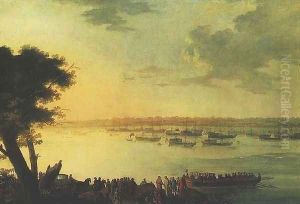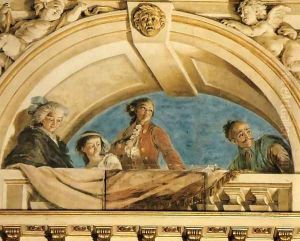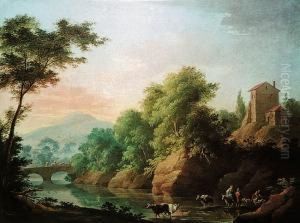Jan Bogumil Plersch Paintings
Jan Bogumił Plersch was a prominent Polish artist of the 18th century, known primarily for his work in the decorative arts and his significant contributions to the interior design of palaces and churches in Poland. His life spanned a period of great change and turmoil in Europe, including the partitions of Poland.
Plersch was born in 1732 in Warsaw, Poland, into a family of German origin. He grew up in a country that was at the time a vibrant and culturally rich commonwealth, with a strong tradition in the arts. Plersch's early life and education are not well-documented, but it is known that he developed his skills in the decorative arts and became a sought-after artist for interior decorations.
Throughout his career, Plersch became known for his ceiling and wall frescoes, which were characterized by their intricate details and the use of bright, vivid colors. His style was influenced by the Baroque and Rococo movements, which were predominant in European art at the time. Plersch's work often included allegorical and mythological themes, as well as religious motifs, which were common in the decorative arts of the era.
One of Plersch's most significant works is the interior decoration of the Holy Cross Church in Warsaw, which features his frescoes. These works are a testament to his skill in creating complex compositions that are both aesthetically pleasing and thematically rich. His contributions to the Royal Castle in Warsaw and the Wilanów Palace are also noteworthy, as they reflect the opulence and grandeur of the Polish nobility before the partitions.
Plersch lived through a turbulent period in Polish history, which included the three partitions of Poland by its neighbors: Russia, Prussia, and Austria. This political upheaval had profound effects on the nation and its cultural institutions. Despite these challenges, Plersch continued to work and contribute to the artistic legacy of his homeland until his death in 1812.
Jan Bogumił Plersch's work remains an important part of Polish cultural heritage. His frescoes and interior decorations are not only examples of his personal talent but also reflect the broader artistic trends of his time. They continue to be admired for their beauty and craftsmanship and are preserved as part of Poland's national treasures.



